For several years now, I’ve been working on a historical fiction novel set during the French Revolution. The novel retells the story of Alix de Morainville, first introduced in George Washington Cable’s 1888 book Strange True Stories of Louisiana. The legend of Alix de Morainville holds that she was the daughter of a Norman count, raised in the tiny fishing village of Morainville, who later moved with her parents to the court of Louis XVI and Marie Antoinette at Versailles, and married her cousin, Vicomte Abner de Morainville. After her husband was killed during the French Revolution, she married her gardener, Joseph Carpentier, to lose her title and save her life. Then the two of them fled to Spanish-controlled Louisiana, into the wilderness of the Attakapas Territory, in modern-day St. Martin and St. Mary Parishes.
My novel, To Crown with Liberty, retells this story in a whole new way, taking both Alix and the reader on a journey through France in the last days of the ancien régime and the first years of the revolution. My recent trip to France took me to many of the settings of the novel so that I could experience some of Alix’s life first-hand.
Read Part 1 of my adventures here.
Second Stop: Paris
In my novel, Alix’s home in Paris is situated in the neighborhood of Saint Germain des Prés, which is where I spent most of my time. Saint Germain des Prés is home to such landmarks as Saint Sulpice Church, the Sorbonne (Université de Paris), Luxembourg Gardens, and the Odéon Theatre.
Saint Sulpice was a major focus of my time in Paris because it is Alix’s parish church and the setting of several scenes from the novel. I toured it twice, as well as attending Mass and an organ recital.
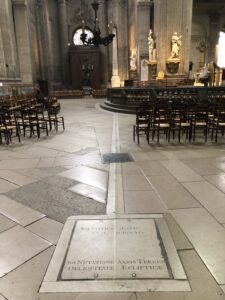
The astronomical gnomon inside Saint Sulpice, which uses the sun for extremely precise measurement of time. Some scholars believe its existence is the reason the Revolution did not desecrate Saint Sulpice to the same extent as most other churches.
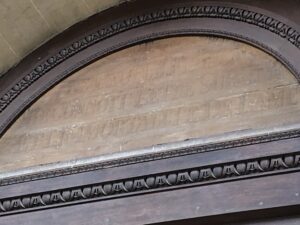
The last remaining artifact of the revolutionary Cult of the Supreme Being in France, above the doors of Saint Sulpice
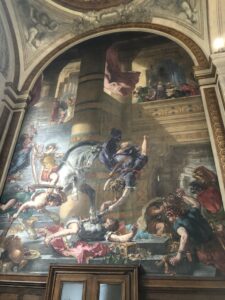
One of three newly restored paintings by Eugene Delacroix in the Chapel of the Holy Angels in Saint Sulpice
I did leave Saint Germain to tour sites pertaining to the French Revolution in other parts of Paris, as well as to visit the Carnavalet Museum, which only recently reopened after five years of renovation. I focused on the section devoted to the revolution, but if you’re going to Paris, you can easily spend an entire day there viewing everything from ancient streets signs to original Renoir paintings.
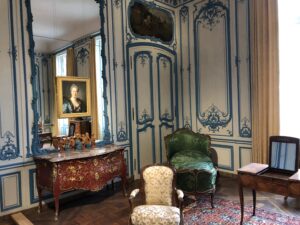
Recreation of a genuine 18th century salon, Carnavalet museum
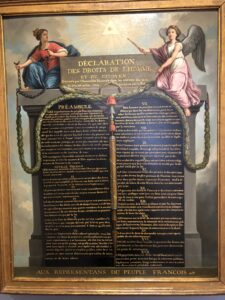
The Declaration of the Rights of Man and the Citizen, Carnavalet Museum
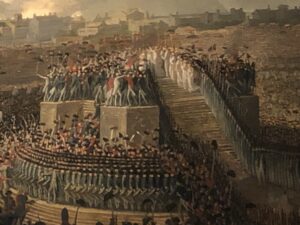
Detail of a painting of the Festival of Federation on the 1st anniversary of the fall of the Bastille, July 14, 1790, Carnavalet museum
Another highlight of Paris was a tour of Saint Joseph des Carmes, a Carmelite monastery before the revolution that became one of the major sites of the September Massacres in 1792—an event that will feature heavily in my novel. Here, one hundred fourteen priests who refused to swear an oath to the “Constitutional Church” were martyred, including many who served at Saint Sulpice.
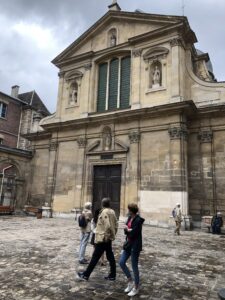
Saint Joseph des Carmes
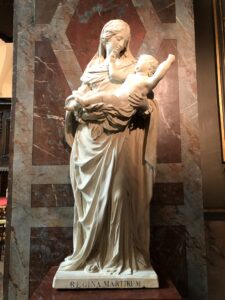
The statue before which the martyrs prayed immediately before being executed
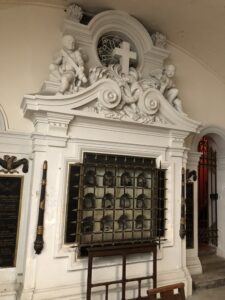
Skulls of some of the 114 priests killed during the massacres in the crypts of Saint Joseph des Carmes

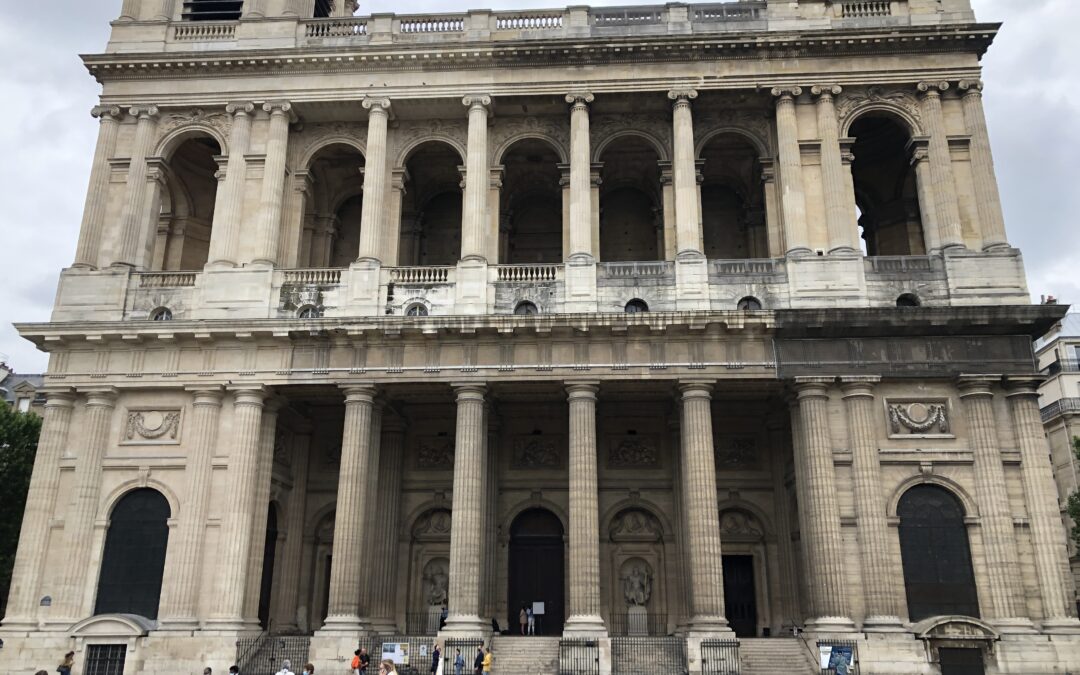
Recent Comments